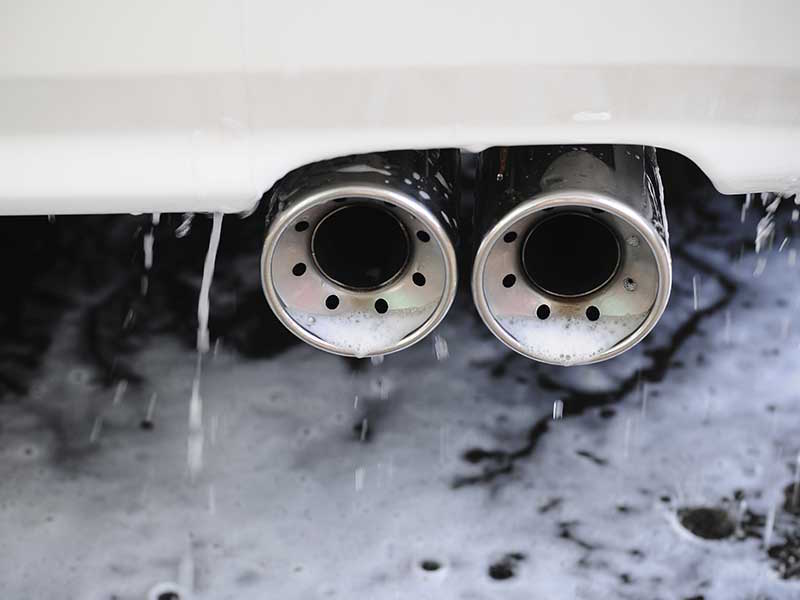


Ah, water. Crisp, refreshing water. See if you can hold that thought starting… now.
Hydrogen fuel cells work by reacting hydrogen molecules and oxygen through two electrodes and an electrolyte, also known as a battery. Hydrogen comes through the anode, contacts the electrolyte catalyst and splits into negatively charged electrons and positively charged protons. The electrons flow into an electrical circuit, while the protons flow through the electrolyte and combine with oxygen and returning electrons in the cathode, forming heat. And water.
Yes, water. But is it safe to drink from the tailpipe of a fuel cell car? Car and Driver’s Don Sherman did just that after testing the Toyota Mirai last month. Olympic sprinter Iwan Thomas drank a glass produced by a Hyundai Tucson FCEV this week on live television. But while Sherman said his Toyota tap put out “just flat, flavorless water, as Mother Nature intended,” Jim MacPherson, a mechanic and the rare automotive journalist who tested a Toyota Highlander FCHV for months on end, isn’t so thirsty.
“It should be pure water, which is good and definitely not a pollutant. But I would decline,” he told The Drive. “Who, after all, knows what else might be in the fuel cell’s liquid-discharge pipe? These are, after all, road-going vehicles, exposed to dirt, dust, tar and who knows what else. I’ll pass, thank you.”
Jim’s takeaway: Drink from a tap, not a tailpipe.